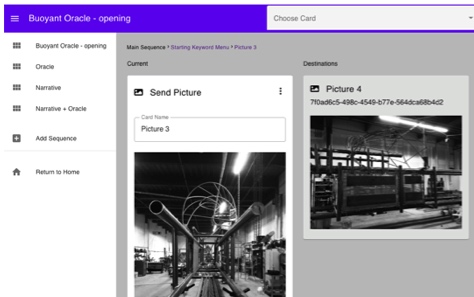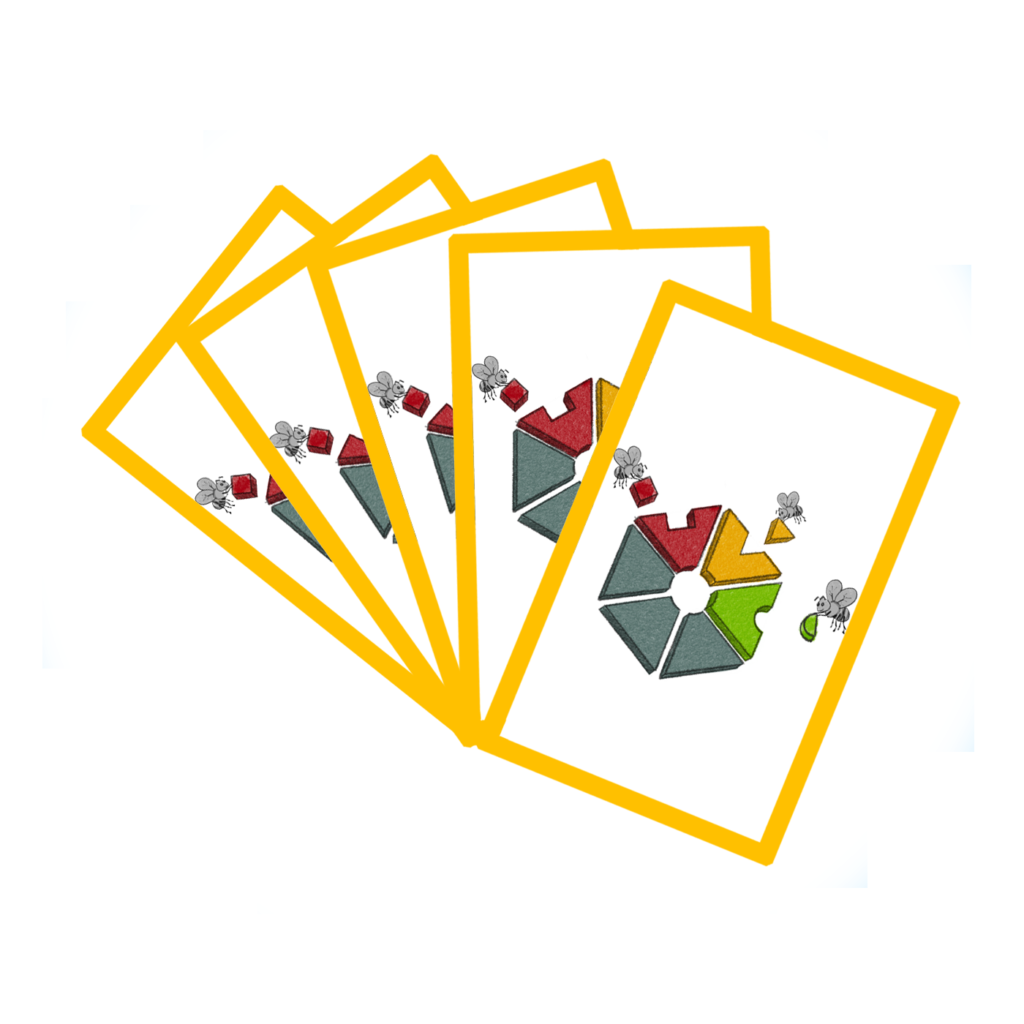OUR TOOL: Hive Mechanic


CREATE: Our tool uses a card-based interface to allow anyone (librarian to community artist) to create a neighborhood game or interactive story — see our tasting menu, experience walk-through video, or earlier collaborative projects. No programming skills are necessary to use our online authoring tool, although you may want an expert to install our open-source code.
PLAY & INTERACT: Completed games are run on a community server. The server organizes the live game by coordinating players, sending text messages (with services like Twilio), checking on city data services (via API), and optionally coordinating with any kiosks or installations (e.g., with tiny Raspberry Pi computers embedded in physical space). For more, see our ecosystem (link coming to Playful City Lab page).
EMBED IN SPACE (advanced extension): Your experience can respond to the physical world, including through a storytelling box, kiosk, or sensor — including motion sensors, RFID taps and more. It could happen in a makerspace, a museum exhibit, or at the front desk of a library. The physical device just needs internet access to contact our Hive Mechanic server (e.g., to update an Activity variable or change the game state). We have experimented with kiosks powered by tiny Raspberry Pi computers. The content in Hive Mechanic is still written in the same editor – and can sometimes be pushed out to a kiosk to guide audio, trigger lighting, etc. See our embedded sensor tools.
Design thinking and card interface

Paper cards are used to help newcomers conceptualize good feedback loops and create fun choices for their players. Then, in the online authoring tool, the card system allows them to easily translate their ideas into interactive experiences.
Our web interface for Hive Mechanic is how you create a game or activity — no special apps required. Our tool is designed to be visual and to help democratize game design. It is simpler than tools like Scratch and ARIS, with a hint of the internet of things like IFTTT.
Hive Mechanic is a simple tool to create games and interactive stories for cities. Hive Mechanic allows anyone to make outdoor and mobile experiences without coding skills. Instead, the system prioritizes text messaging (including photos and video messages), branching audio hotlines, and embedding play in public space with QR codes, posters, and events like street festivals that can bring local history to life.
The interface uses visual cards to show actions – like sending a historic photograph as a text response to a secret keyword. It is free and open source. For more, see screen shots on how it works.
Installing
The Hive Mechanic editor is easy to use, but the software must be installed on a web server. As a public service, we make our source code open and free to use.
To use Hive Mechanic on a server, you either need to rent a server (a rather technical process) or have someone host a server for you. For example, the Playful City Lab provided hosting for 50+ towns in 2022-24 as part of our IMLS grant. By the end of 2024, we hope to announce a nonprofit service that will host sites in the future for a fee (perhaps on the order of $1k-2k per year, with some possibility for grants or subsidized). One way to save costs is to purchase a site as a group, for example a state-wide project could bring 25 library projects onto a single server. Another approach: if you are lucky to have a tech friend who feels comfortable with servers, they could set it up for you (possibly with on-demand support from the nonprofit service) at a greatly reduced cost using our open-source code below.
- See also: our the list of alternative technologies for outdoor game design and storytelling beyond our walls (written by the Playful City Lab)
Open source code (and server tips)
As a public service, we make our source code open and free to use. Typically this involves a high level of technical skill, which is why we are simultaneously investigating how we can provide Hive Mechanic as a service to libraries. While our system is designed with non-programmers in mind, advanced programmers can tap into our open-source code to create more complex playful experiences.
Skilled developers are free to branch the project for their own goals, and install it on their own servers (you’ll need to install Django and Postgres at a minimum).
- Main repository for our Django version of Hive Mechanic (on GitHub)
- Interaction cards – the building blocks for making new games (on GitHub)
- Python client – for connecting to Hive Mechanic remotely, including via a Raspberry Pi or laptop (on GitHub)
We are also looking for collaborators in cities and communities around the world to design with us. For select projects, we host the server installation as well. Be in touch with your ideas, or just to explore!
History and origin story
The software was developed by the Playful City Lab at American University through collaborations and funding from the Smithsonian Anacostia Community Museum/Smithsonian Women’s Committee, the DC Office of Planning, the DC Public Library, the Institute of Museum and Library Services (IMLS reference # LG-250108-OLS-21), and the Humanities Truck. Seed funding was provided by the Office of the Provost at American University.

